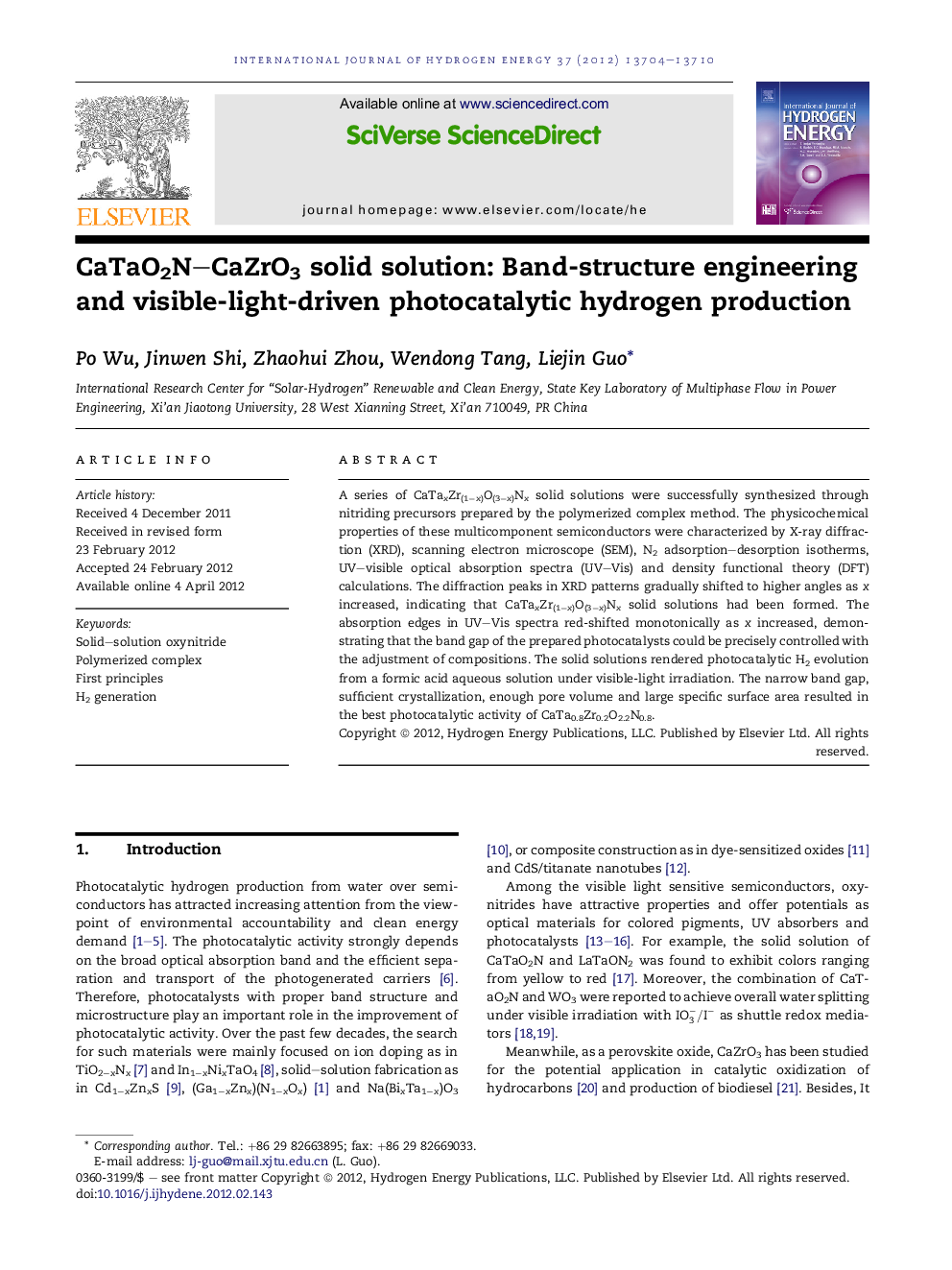| Article ID | Journal | Published Year | Pages | File Type |
|---|---|---|---|---|
| 1282273 | International Journal of Hydrogen Energy | 2012 | 7 Pages |
A series of CaTaxZr(1−x)O(3−x)Nx solid solutions were successfully synthesized through nitriding precursors prepared by the polymerized complex method. The physicochemical properties of these multicomponent semiconductors were characterized by X-ray diffraction (XRD), scanning electron microscope (SEM), N2 adsorption–desorption isotherms, UV–visible optical absorption spectra (UV–Vis) and density functional theory (DFT) calculations. The diffraction peaks in XRD patterns gradually shifted to higher angles as x increased, indicating that CaTaxZr(1−x)O(3−x)Nx solid solutions had been formed. The absorption edges in UV–Vis spectra red-shifted monotonically as x increased, demonstrating that the band gap of the prepared photocatalysts could be precisely controlled with the adjustment of compositions. The solid solutions rendered photocatalytic H2 evolution from a formic acid aqueous solution under visible-light irradiation. The narrow band gap, sufficient crystallization, enough pore volume and large specific surface area resulted in the best photocatalytic activity of CaTa0.8Zr0.2O2.2N0.8.
► CaTaxZr(1−x)O(3−x)Nx solid solutions were synthesized by PC method. ► Absorption edges red-shifted monotonically as x increased. ► CaTa0.8Zr0.2O2.2N0.8 showed best H2 evolution. ► Band gap and specific surface area were both key factors.
